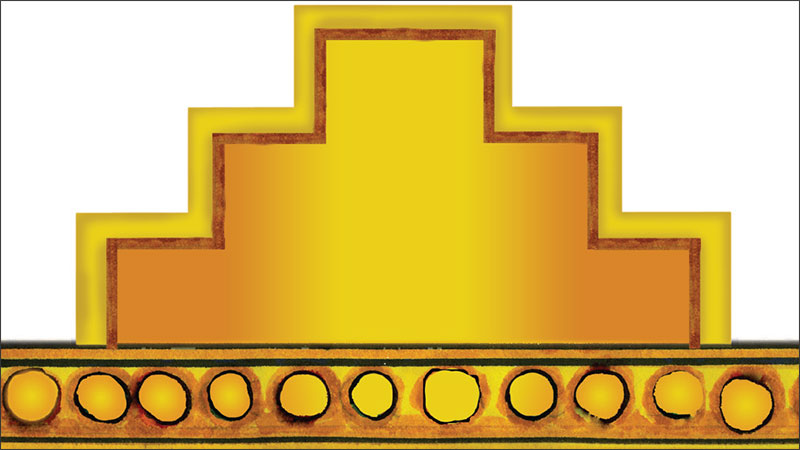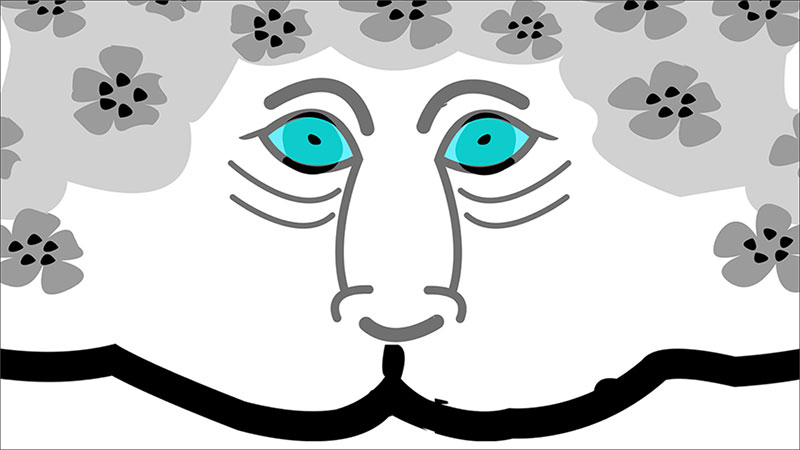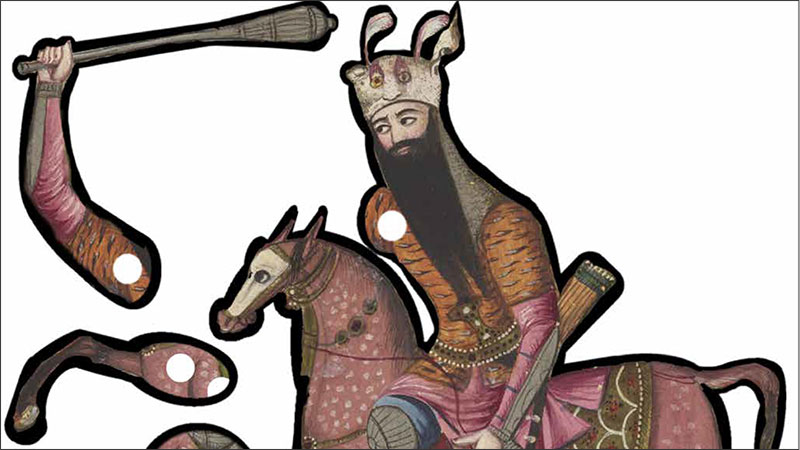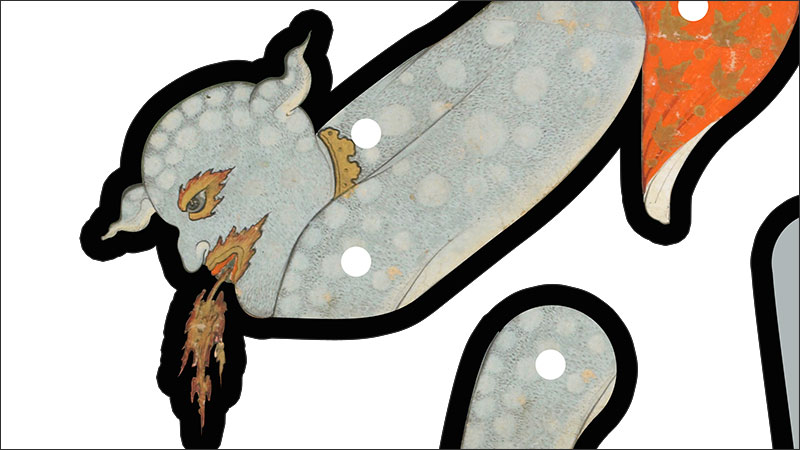Nowruz, the Persian word for “new day,” marks the vernal equinox and the first day of spring. Rooted in Zoroastrianism, the religion of Iran before the advent of Islam, Nowruz was celebrated in much of the ancient Near East as early as three thousand years ago. Today, people in many regions from West Asia and the Caucasus to Central Asia, to South Asia participate in the thirteen days of Nowruz festivities with their own local variations.
In Iran, the centerpiece of the Nowruz celebration is the Haftseen table. The table includes at least seven (haft) items that refer to new life and renewal, each of them beginning with the letter s (pronounced seen in Persian).
- sib (apples): fertility and beauty
- sonbol (hyacinth): fragrance
- serkeh (wine vinegar): immortality and eternity
- senjed (wild olives): fertility and love
- sabzeh (wheat, barley, or lentil sprouts growing in a dish): rebirth
- samanu (wheat sprout pudding): sweetness
- sekkeh (coins): wealth
Other objects, can also be placed on the table, such as:
- a mirror, to reflect the light of wisdom and creation
- a book of poetry by the fourteenth-century writer Hafiz or a copy of the Qur’an
- an orange floating in a bowl of water, to represent Earth floating in space
- candles, to symbolize holy fire
- decorated eggs, to represent fertility
Enjoy our Nowruz digital library, which represents the richness of the holiday’s traditions and celebrations.
Honor Nowruz with us in person and online
We invite you to attend our Nowruz programs, all of which are free of charge.
Get creative with art-inspired activities for all ages
Create your own crowns and puppets, and decorate a coloring page depicting art from the museum’s collection or inspired by Firdawsi’s Shahnama (Book of Kings).
What is the Shahnama?
One thousand years ago, the Persian poet Firdawsi (d. 1020) completed one of the greatest masterpieces of world literature: the Shahnama, (Book of Kings). Composed of some sixty thousand verses, the sweeping epic recounts the myths, legends, and “history” of Iran from the beginning of time to the Arab conquest in the seventh century.
Firdawsi’s text is centered on the reigns of fifty monarchs (including three women) and can be divided into a legendary and a quasi-historical section. It begins with the reign of Kayumars at the dawn of time and concludes with the last Sasanian king, Yazdigird (reigned 632–651), who was defeated by the Arabs. These fifty “chronicles” provide a framework for the dramatic deeds and heroic actions of a range of other personages who are often aided by—or who are at battle with—a host of fantastic creatures and treacherous villains. The poem draws on a wealth of sources, including local and dynastic histories, the Avesta (the sacred text of the Zoroastrian religion of ancient Iran), and myths and legends preserved in oral tradition.
Crowns
Make your own crown inspired by images of nobility from the Book of Kings. Cut out your favorite design, punch holes near the edge, and use string to fasten the crown to your head.
Shahnama puppets
Create a puppet of a character from the Shahnama. Cut out your favorite character and attach the paper to cardboard (from a cereal box, for example) with a glue stick. Then, watch this video to learn how to assemble your puppet.
Coloring activity
Puzzles
Learn more about Nowruz traditions
We’re celebrating Nowruz by sharing traditions of the holiday as well as some of the ways that we’ve celebrated at the National Museum of Asian Art in the past.
- Celebrating Stories from the Persian Book of Kings
- Inspired by Storytelling
- Xanthe Gresham and the Art of Storytelling
- Azar Nafisi: My Father’s Shahnameh
- Nowruz Courts and Music
Discover art and music
Enjoy exhibitions currently on view at the museum and explore our Nowruz video library, which highlights collections, performances, and past celebrations.
On View
Ongoing
As our experiences become increasingly mediated by digital technologies, direct sensory perception and appreciation of the world have become all the more important. The sound of a voice, the glimpse of a painting, the taste of food, the touch of fabric, the scent of a flower—all stimulate the senses. According to classical and Arab philosophy, the five outer senses—sound, sight, taste, touch, and smell—are directly connected to the inner senses that define us as human beings: understanding, imagination, and memory.
 Feast Your Eyes: A Taste for Luxury in Ancient Iran
Feast Your Eyes: A Taste for Luxury in Ancient Iran
Ongoing
The wealth and power of ancient Iran was in part expressed in portable luxury objects fashioned from precious metals and decorated with royal imagery.
Video Library
Music Podcasts
Show your festive spirit on Zoom
Join your next Zoom call with a newly designed Zoom background using artworks from the National Museum of Asian Art.










 Fashioning an Empire puzzles
Fashioning an Empire puzzles




